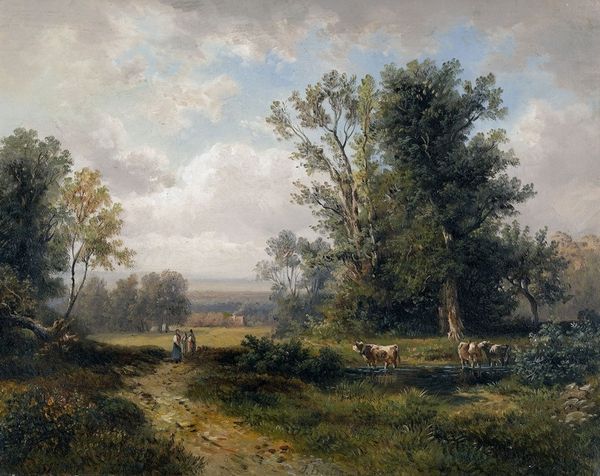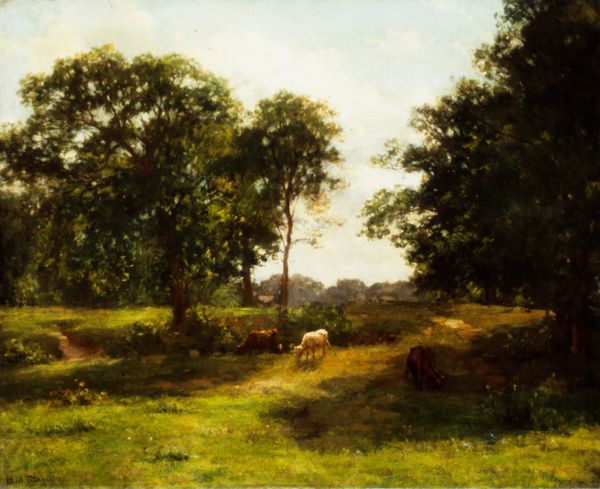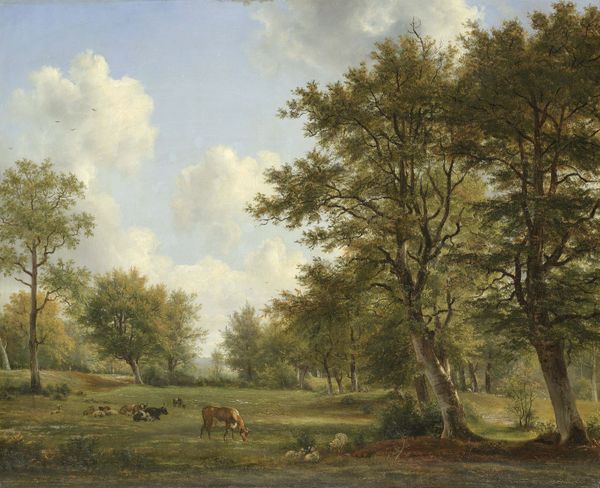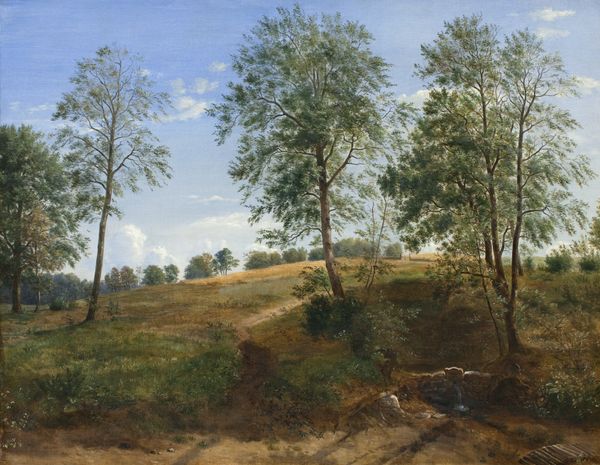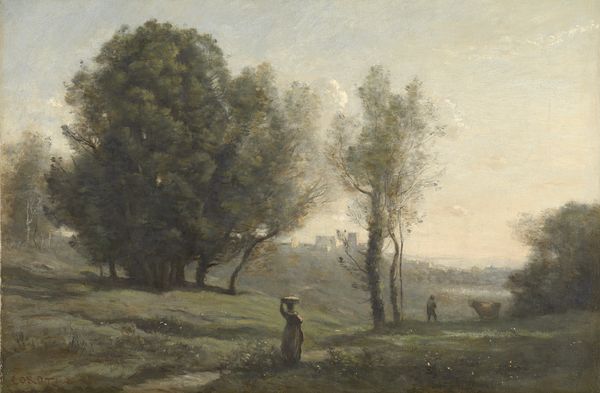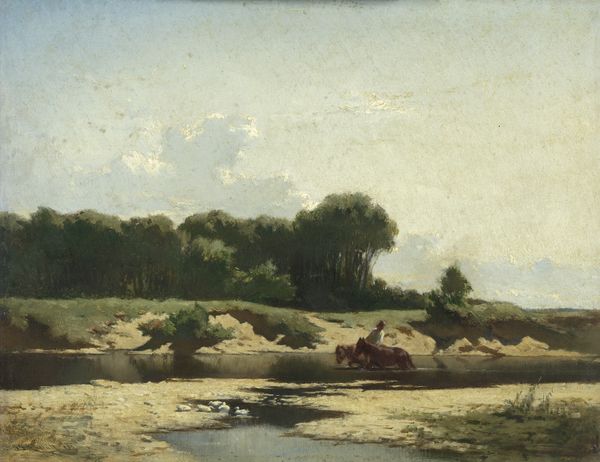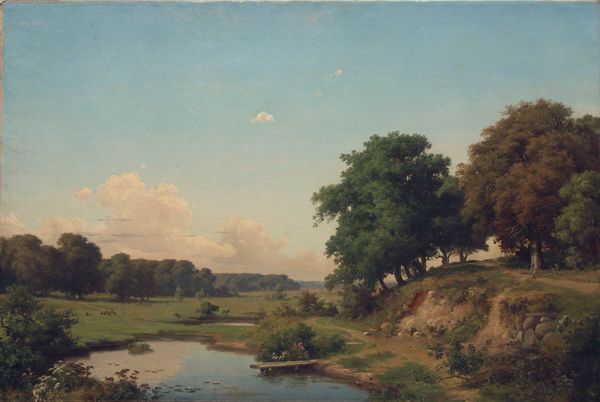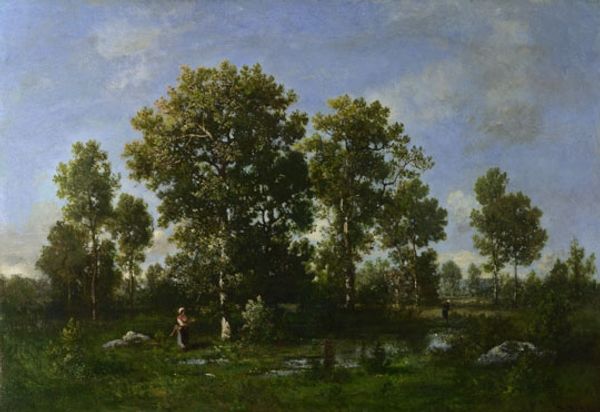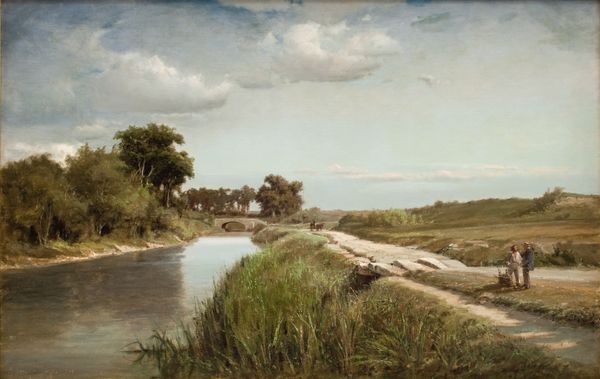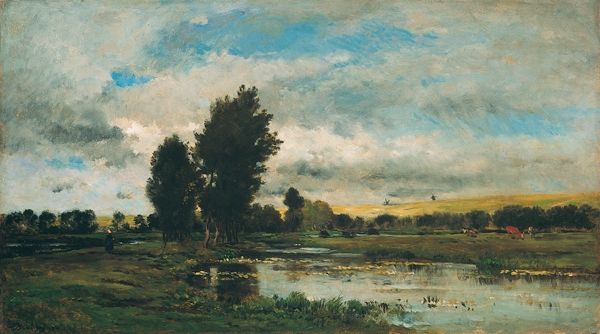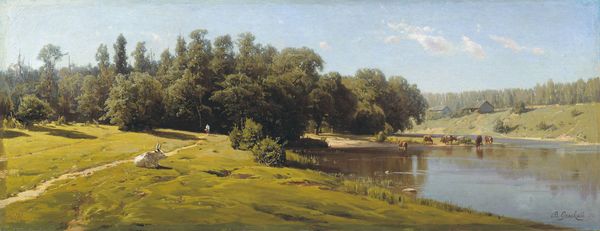
painting, oil-paint
#
painting
#
oil-paint
#
landscape
#
nature
#
oil painting
#
romanticism
#
realism
Dimensions: 123 cm (height) x 158 cm (width) (Netto), 143.4 cm (height) x 178.4 cm (width) x 8.2 cm (depth) (Brutto)
Editor: So, this is Dankvart Dreyer’s “Landscape near Hammerøllen, North Zealand,” painted in 1843. It’s an oil painting, and honestly, I find it very peaceful, almost idyllic. There's a real sense of serene Danish countryside. What strikes you most about it? Curator: What stands out to me is how this painting intersects with ideas of national identity being forged in 19th-century Denmark. It presents a specific vision of the Danish landscape as a source of cultural and national pride, doesn’t it? Consider the Realist style combined with Romanticism; can we view that as reflecting the socio-political currents of the time? Editor: I see what you mean. It's not just nature; it’s *Danish* nature. And you are so right - this specific take on realism in that era suggests there was this move toward finding something grounded in the local... almost as a political statement. Is that right? Curator: Precisely! Artists like Dreyer played a significant role in constructing a visual narrative around the idea of "Denmark" during a period of political and social upheaval. Think of the Danish Golden Age around this period; landscape paintings contributed to a collective sense of belonging. Do you think that contributes to our interpretation? Editor: Absolutely! I was initially responding to it just as a nice landscape, but considering that historical context, it takes on a much deeper meaning. It is part of a visual campaign almost, a carefully crafted narrative of the Danish homeland. Curator: Yes. We also need to examine the public role of such imagery at the time. Where were these paintings exhibited? How did the growing museum culture shape their reception? And more importantly, whom did these paintings really cater to in terms of audiences and collectors? These were crucial considerations for understanding Dreyer's contribution to Danish art history. Editor: This has given me a whole new way of viewing 19th-century landscapes; beyond their surface beauty. I’m much more curious to explore those intersections now. Curator: Wonderful. Remember, art is always in dialogue with its historical context.
Comments
No comments
Be the first to comment and join the conversation on the ultimate creative platform.
